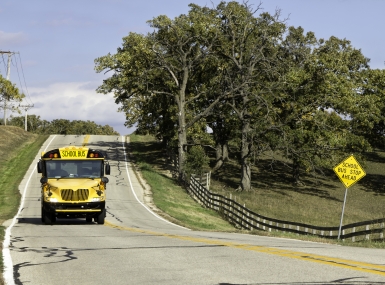USDA Secretary Perdue Directs U.S. Forest Service to Prioritize National Forest System Production and Public Access
Upcoming Events
Related News

Key Takeaways
On June 12, U.S. Department of Agriculture Secretary Sonny Perdue issued a memorandum to U.S. Forest Service (USFS) Chief Vicki Christiansen providing direction to modernize the agency’s systems and approaches to better manage national forests and grasslands. The memorandum is designed to improve the health of the national forests, protect communities from the threat of wildfire and its aftermath, and increase economic opportunities and recreational access on National Forest System (NFS) lands. The memorandum directs the USFS to act on four key priorities:
- Increasing the productivity of national forests and grasslands
- Valuing our nation’s grazing heritage and the national grasslands
- Increasing access to our national forests
- Expediting environmental reviews to support active management
Counties rely on the NFS for economic opportunity, clean water supplies and landscape conservation. The memorandum tasks the USFS with reducing red tape to increase energy and mineral exploration. USFS is expected to further promote forest management activities and timber harvests on NFS lands to support local economic growth, protect watersheds, and safeguard species habitat. The USFS will also deploy new broadband infrastructure to boost internet connectivity in rural America.
National grasslands consist of approximately 3.8 million acres across 12 Western States and provide an important feed source for ranchers and habitat for diverse wildlife. The memorandum deems grazing “essential” for the management of the NFS and requires USFS to ensure grazing access in the development of forest plans. Additionally, it calls for expediting the renewal of existing grazing permits and gives USFS greater flexibility in working with ranchers on grazing practices on federal lands.
Additionally, the memorandum requires USFS to, where feasible, create new recreation opportunities in areas of the national forests that currently limit public access. Decisions on public access will be made in coordination with states, counties and other interested parties. Approximately 150 million people visit the NFS annually, according to the most recent National Visitor Use Monitoring Program Report from the Forest Service, bringing economic growth to local communities.
Finally, USFS is required to streamline environmental analyses to enhance management of forests and grasslands. Many of these changes were reflected in the draft rules to modernize the NEPA process issued by USFS last summer. Counties supported these draft rules to establish time and page limits on the completion of NEPA documents, narrow the scope of environmental reviews to focus analyses on meeting the benchmarks in existing laws and regulations, and establish greater consultation across agencies in establishing more efficient environmental reviews.
NACo will continue to work with federal land management agencies to elevate the voice of public lands counties and defend their priorities in the implementation of this memorandum.
Related News

Secure Rural Schools Reauthorization Act of 2025 signed into law in victory for counties
On December 18, 2025, President Trump signed the Secure Rural Schools Reauthorization Act of 2025 (P.L. 119-58) into law. The reauthorization of the SRS program is a major victory for counties and ensures that timber-dependent counties will receive critical funding to maintain essential local government services such as public education and transportation infrastructure.

DOI announces creation of new U.S. Wildland Fire Service
On September 15, the U.S. Departments of the Interior (DOI) and Agriculture (USDA) announced major joint directives to change how the agencies will coordinate and provide wildfire response, including the creation of a new U.S. Wildland Fire Service within Interior.

U.S. House of Representatives passes SPEED Act and other permitting reform bills
On December 18, the U.S. House of Representatives passed the SPEED Act (H.R. 4776). The SPEED Act would strengthen county involvement in decision-making and make needed commonsense reforms to the federal environmental review process.